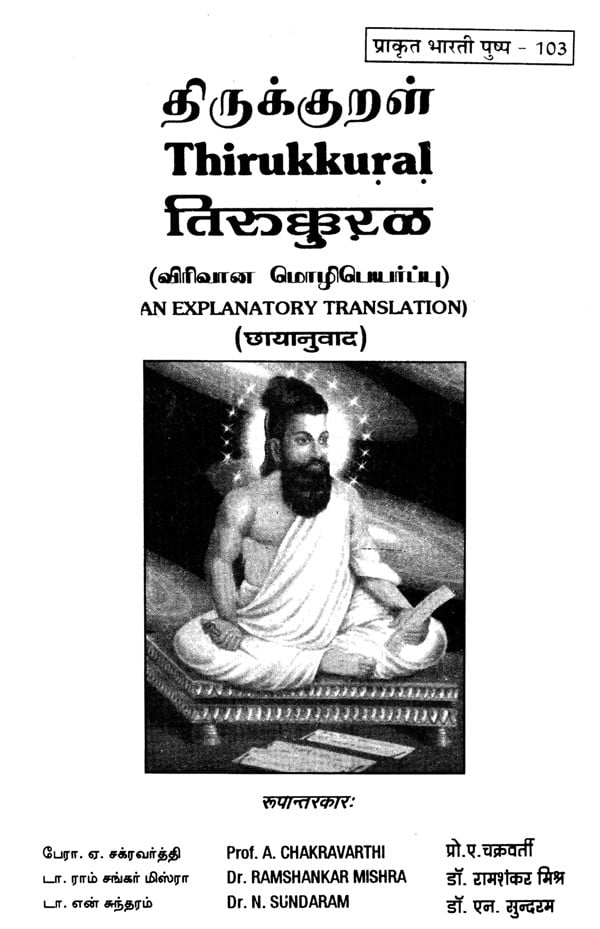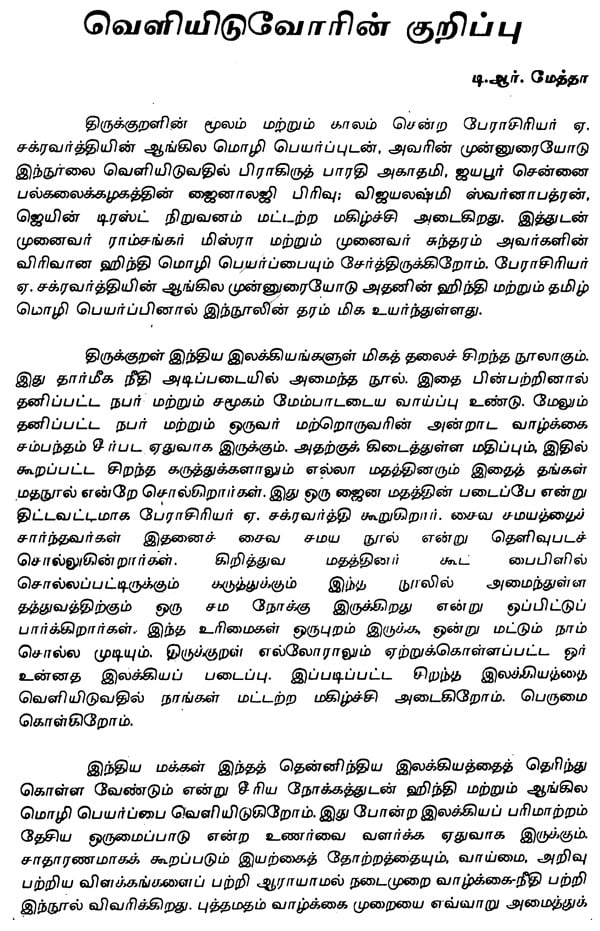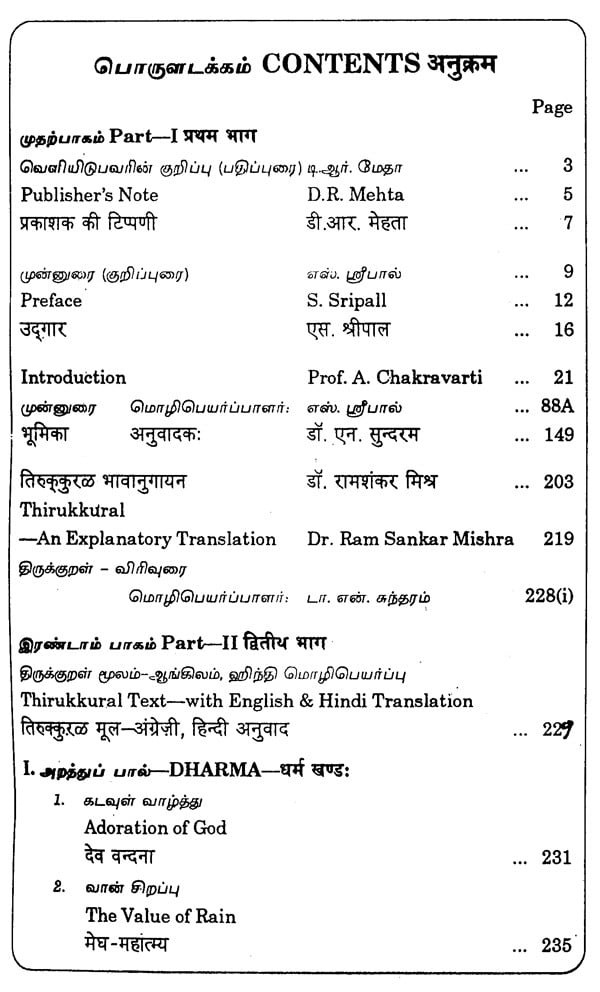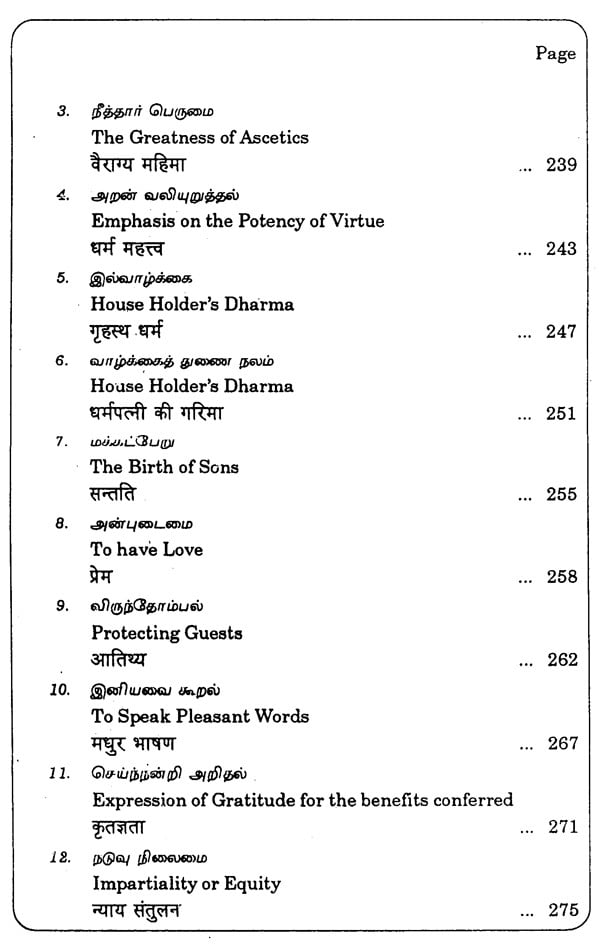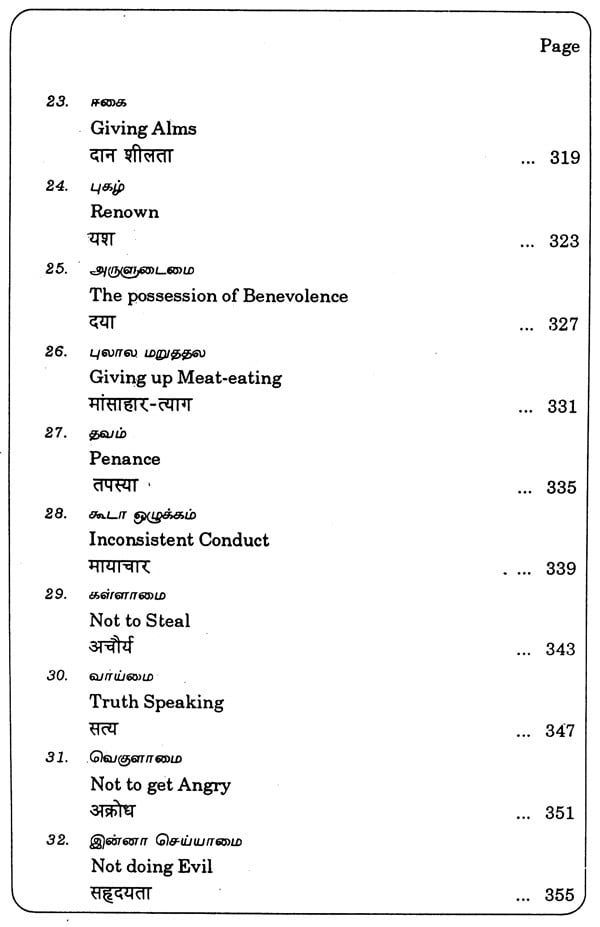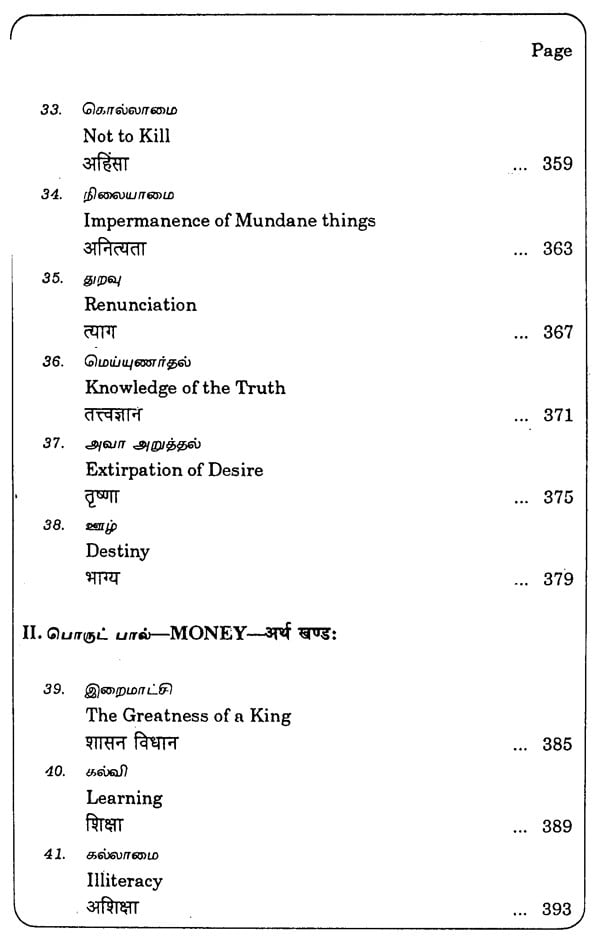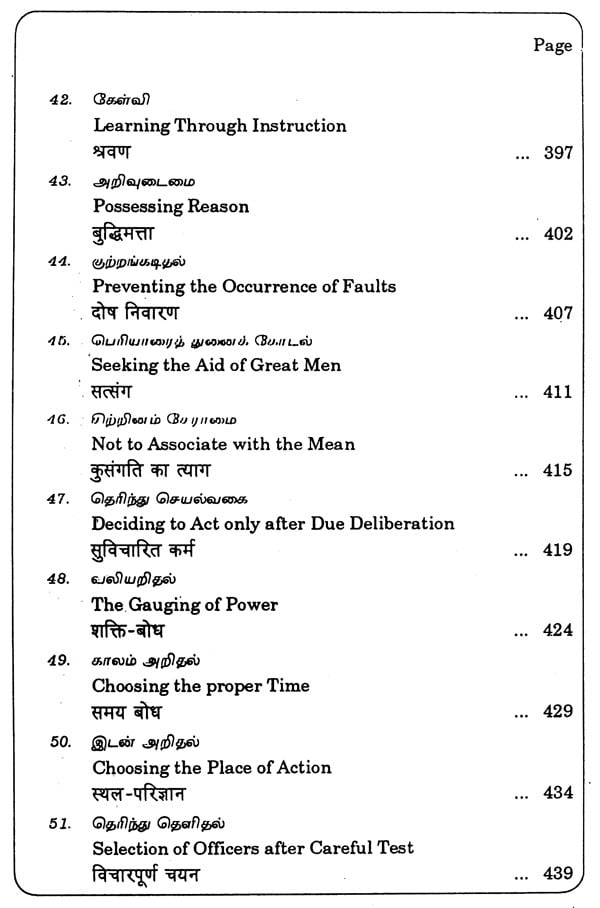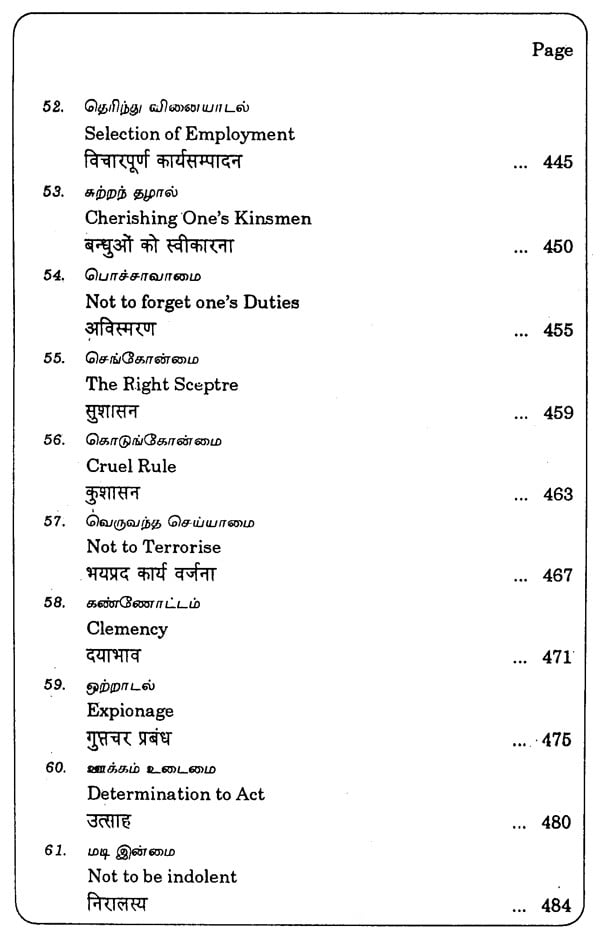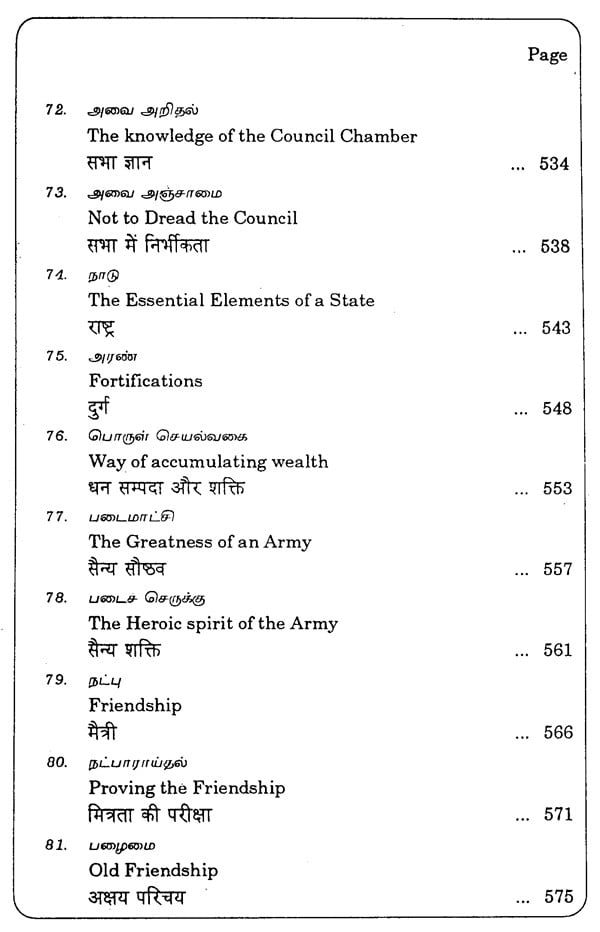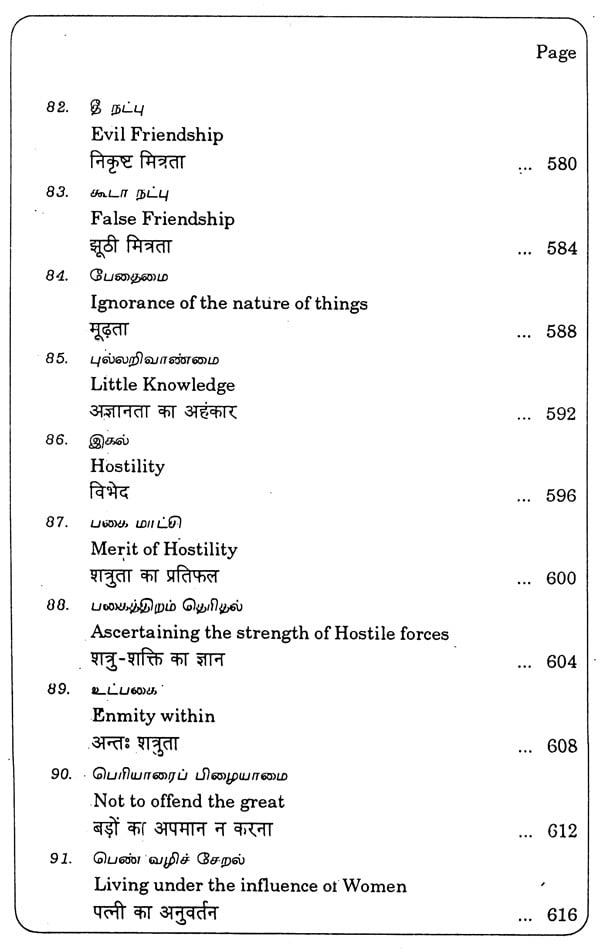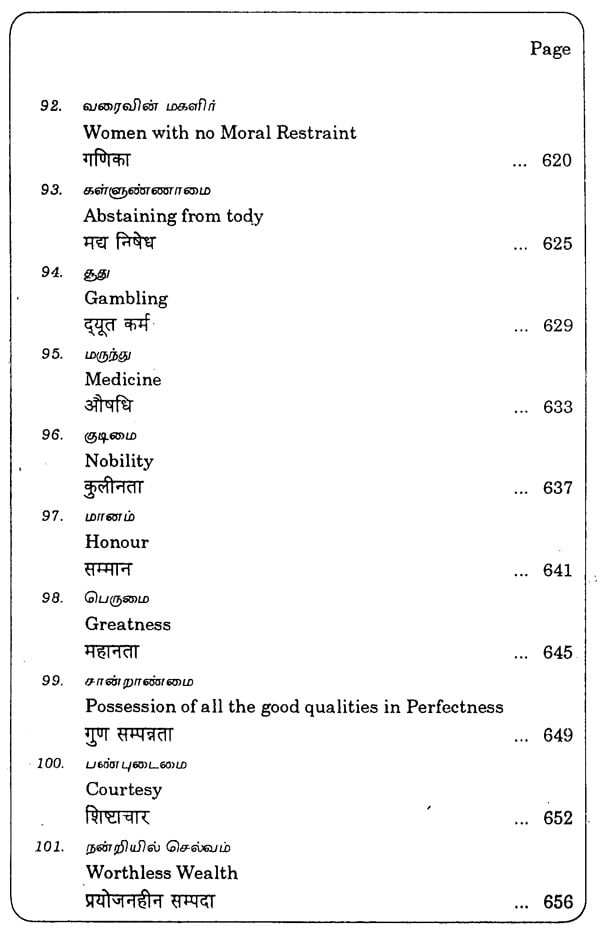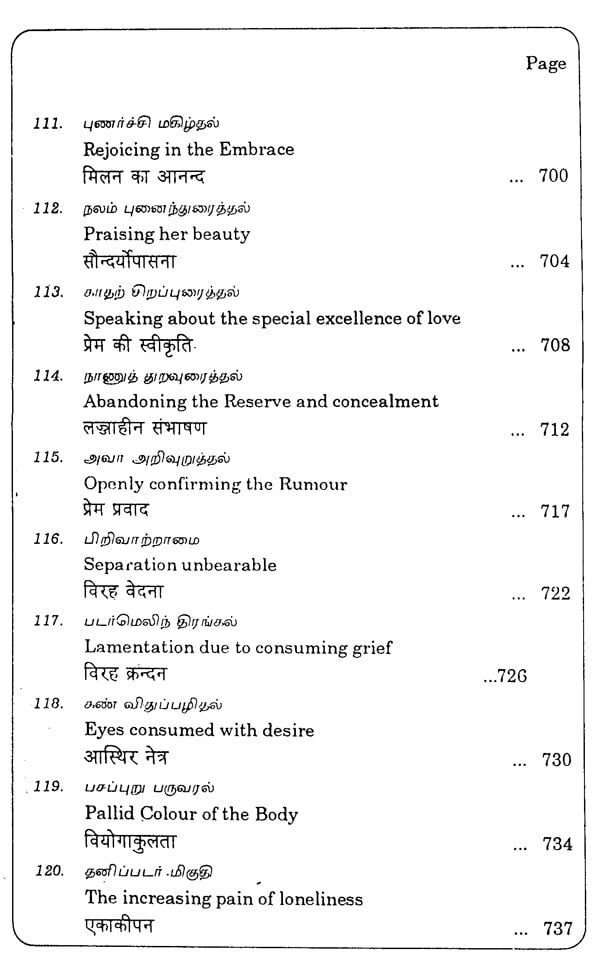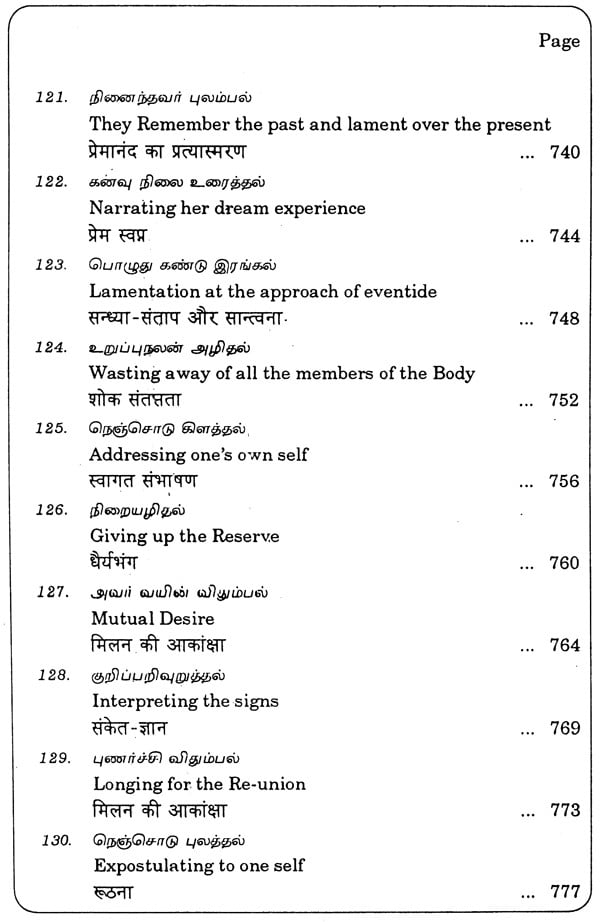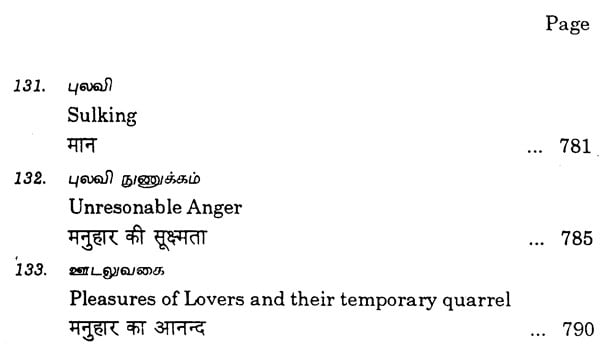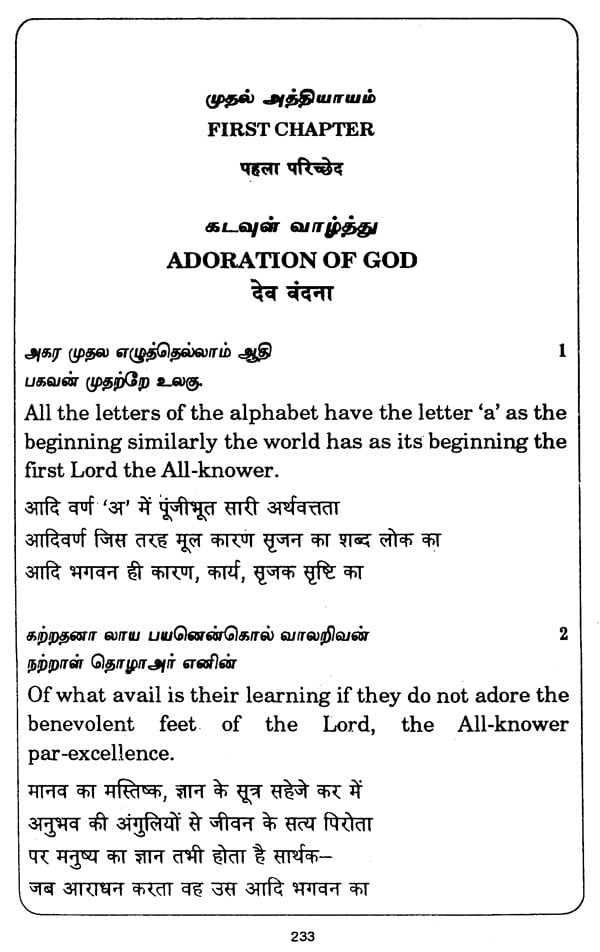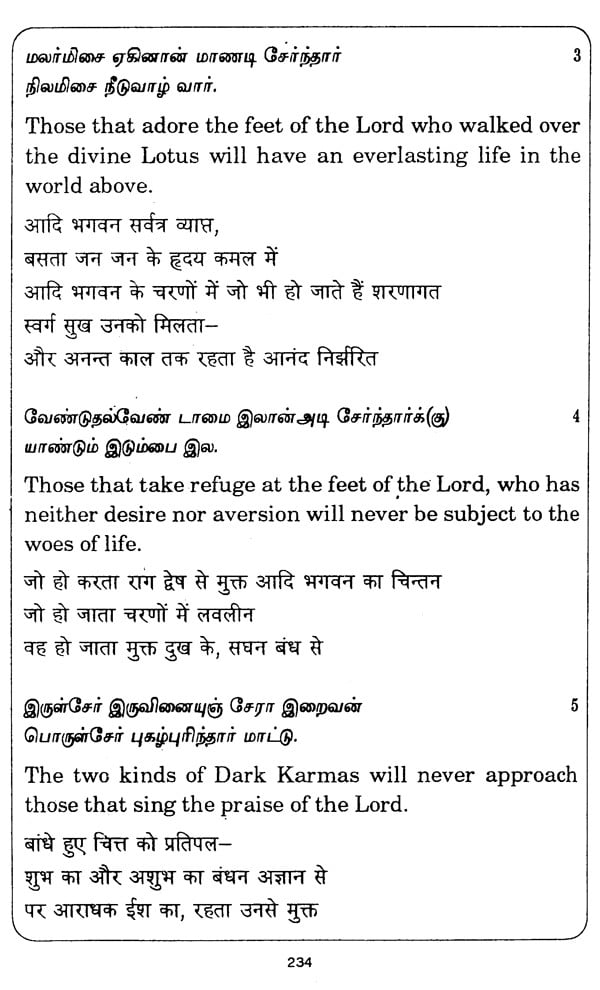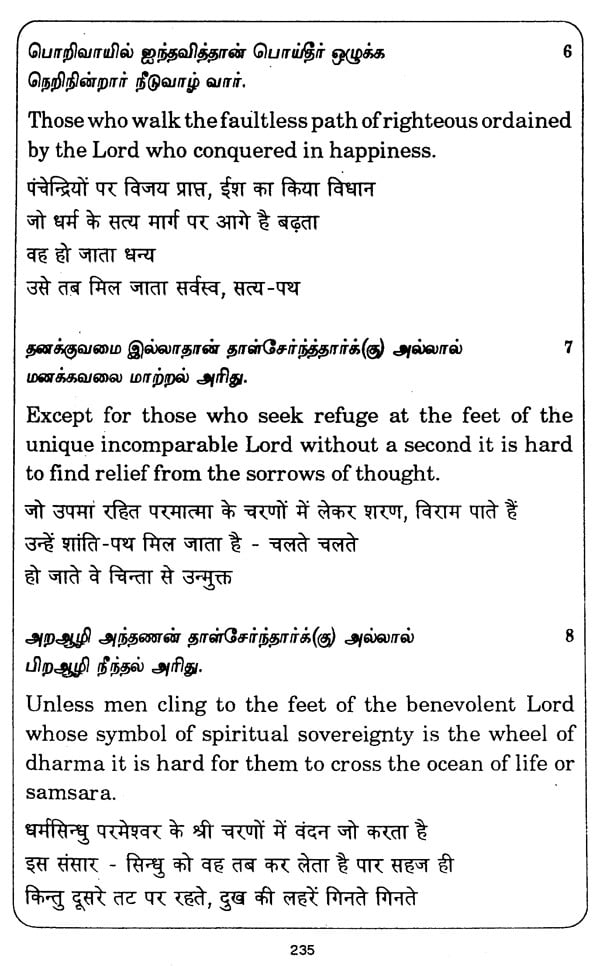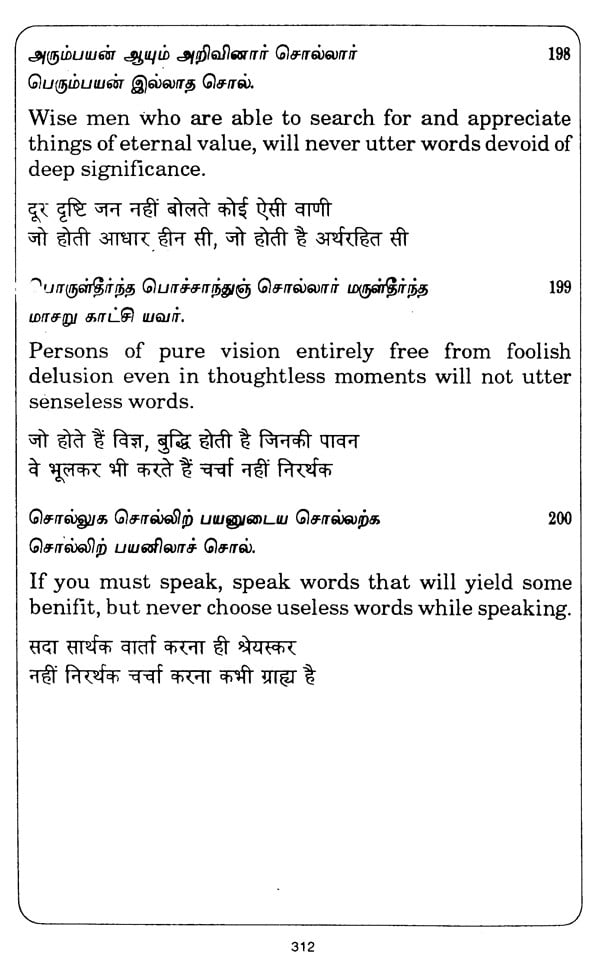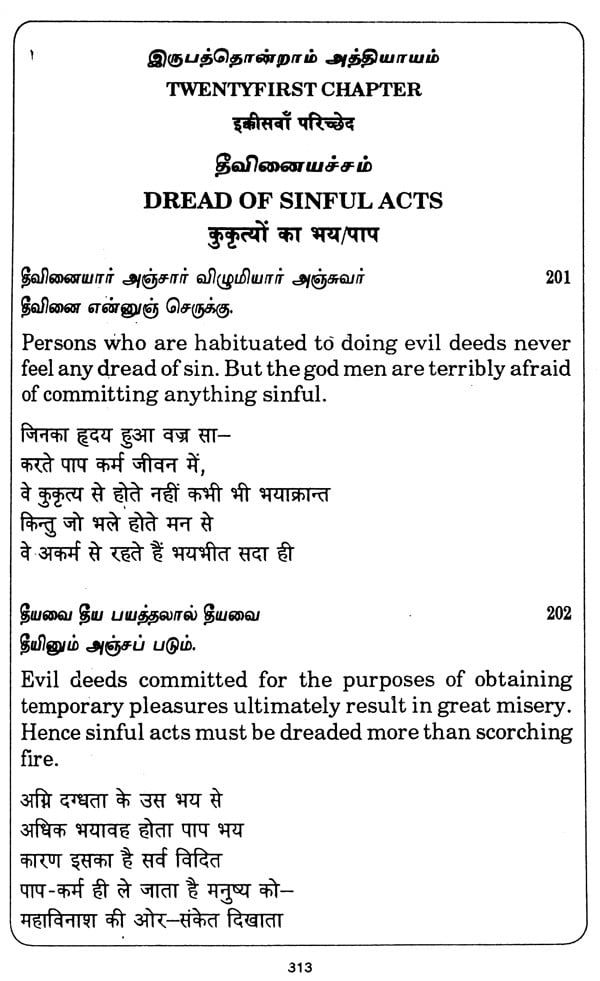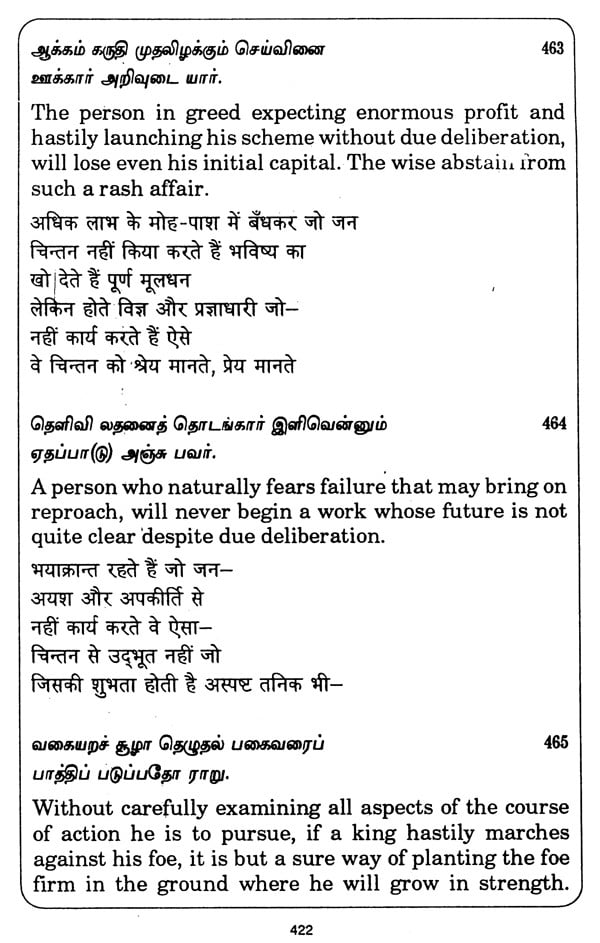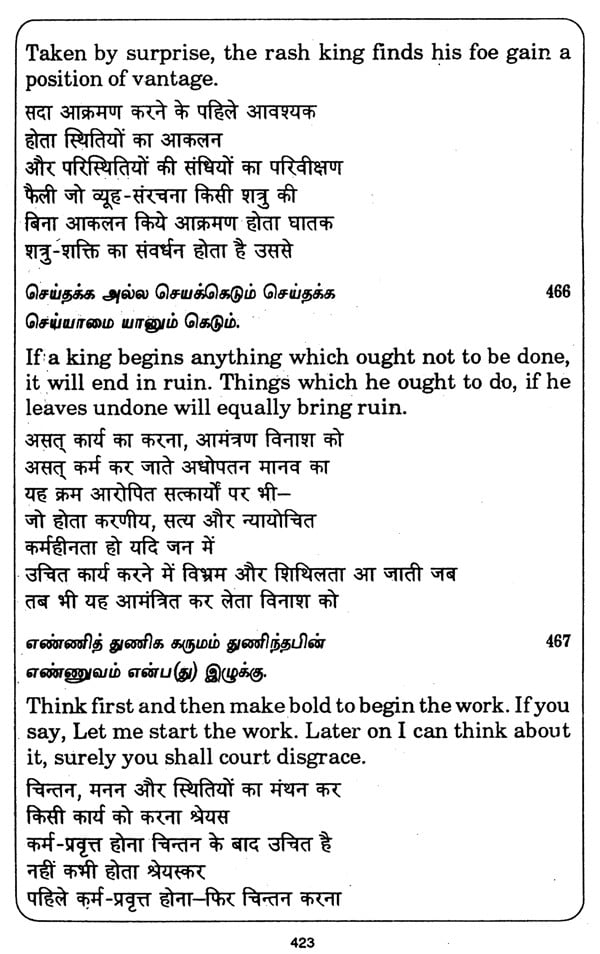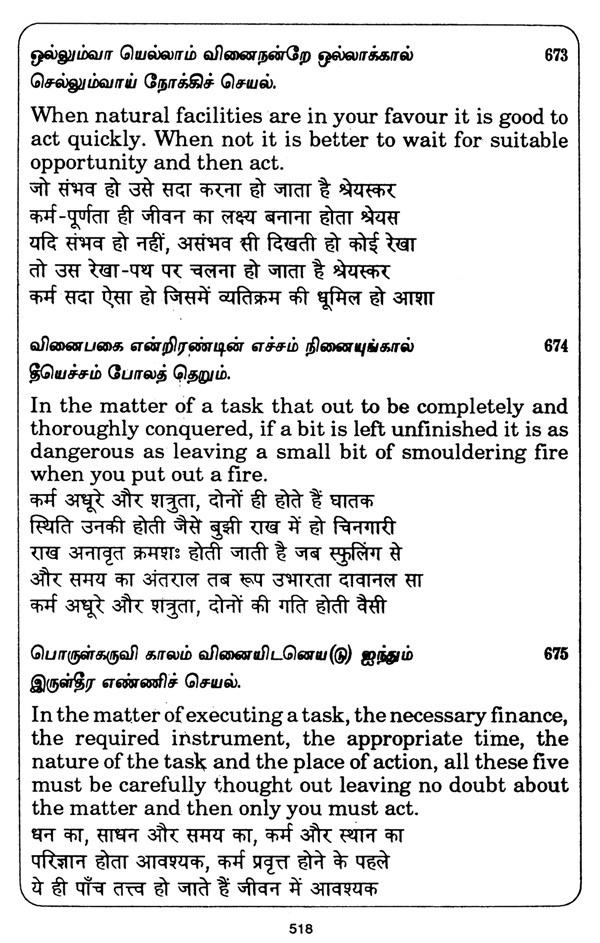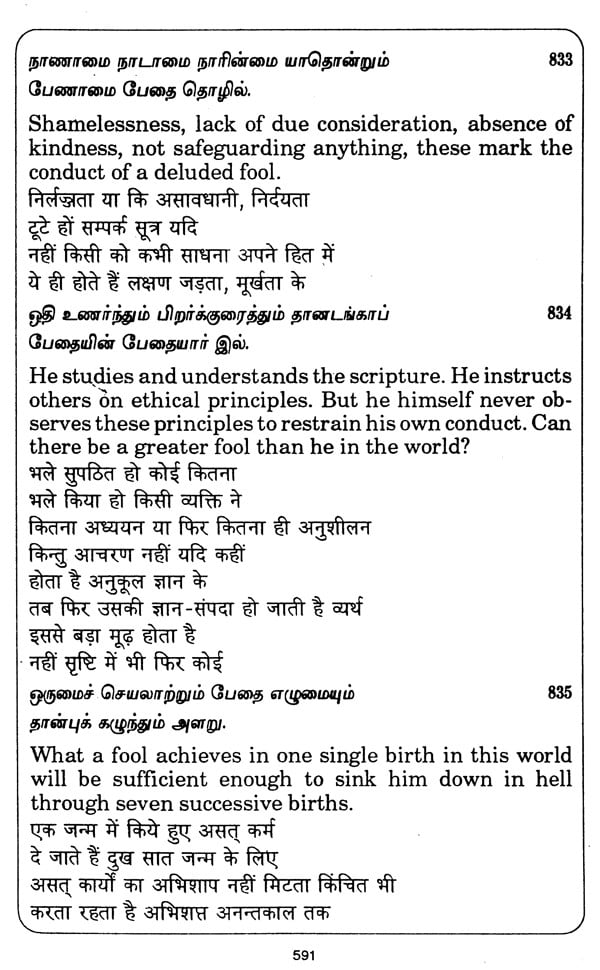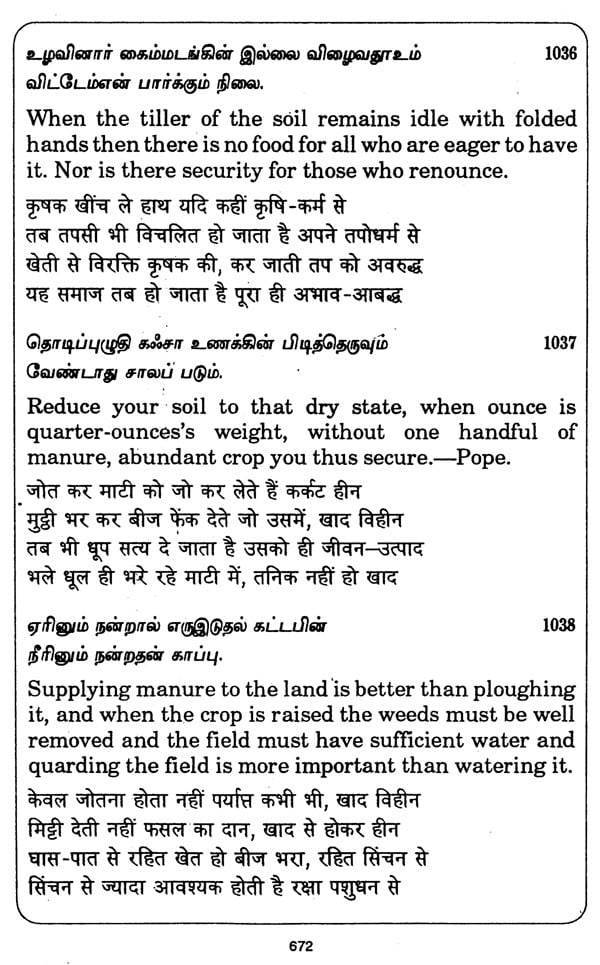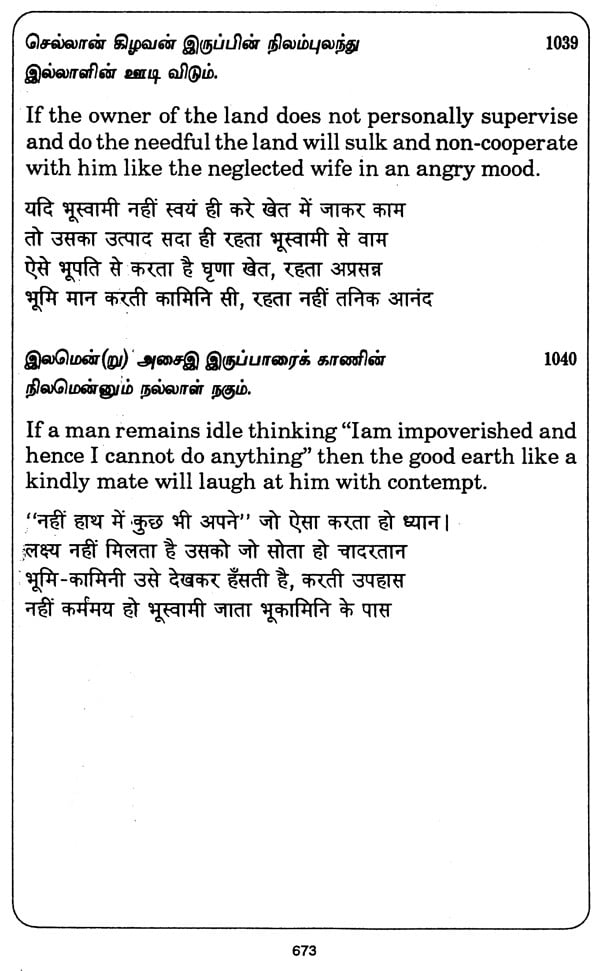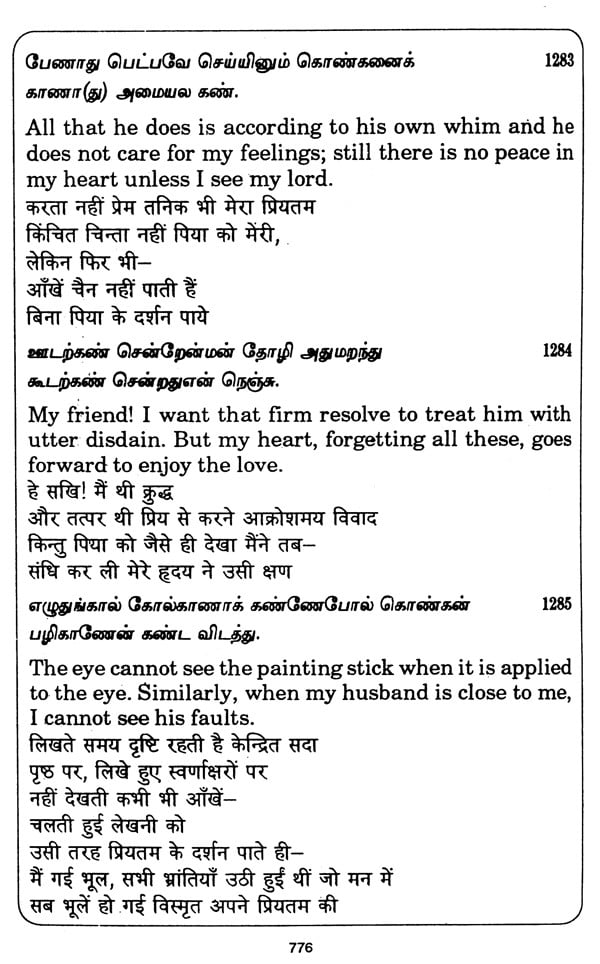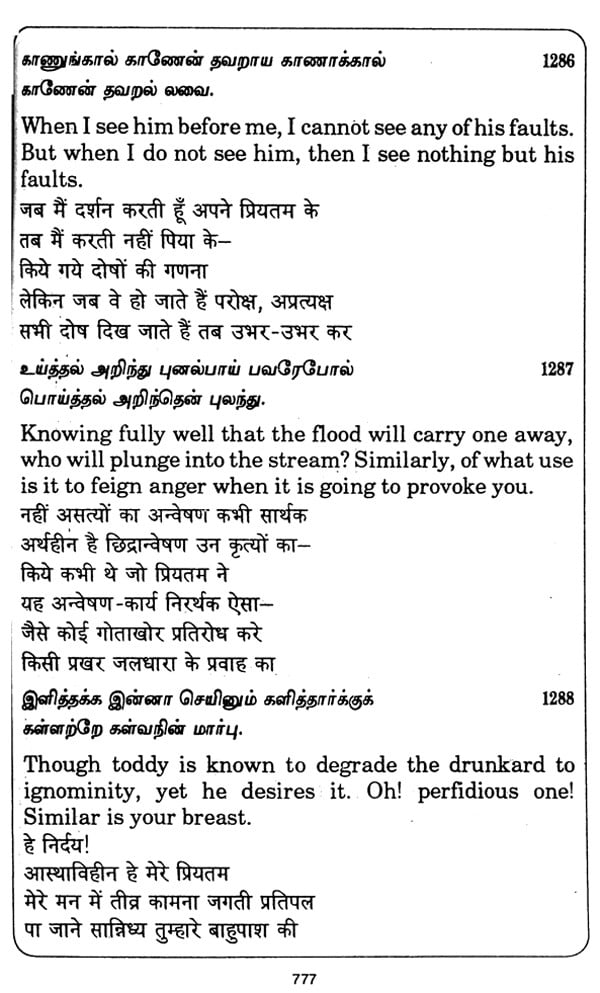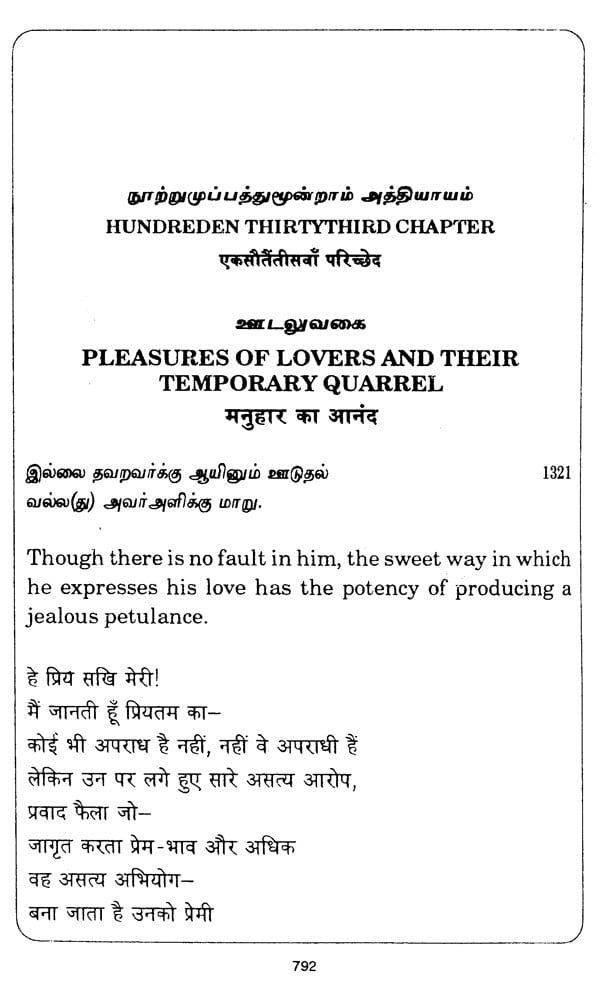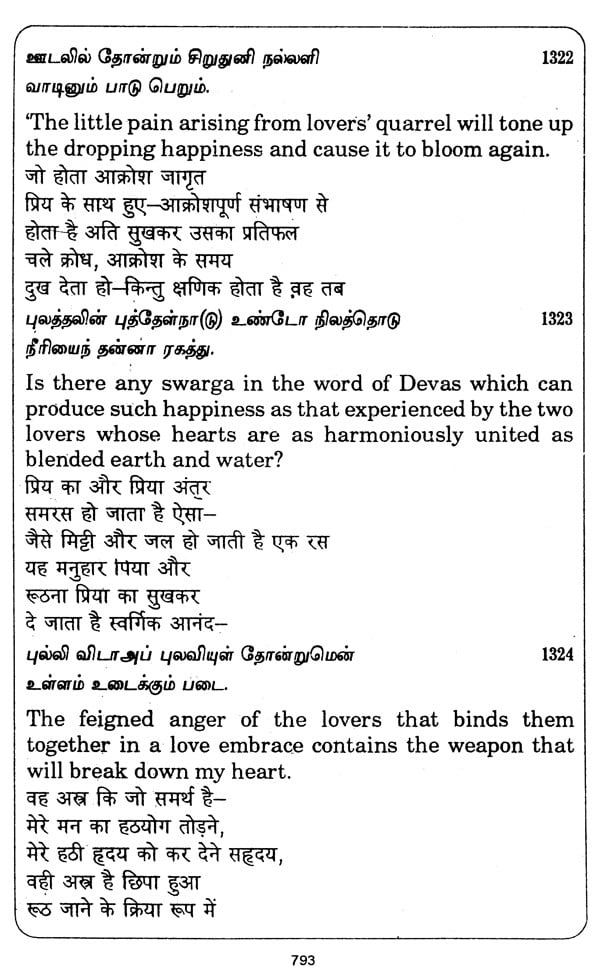
तिरुक्कुऱळ- Thirukkural (An Explanatory Translation)
Book Specification
| Item Code: | UAB256 |
| Author: | Various Authors |
| Publisher: | Prakrit Bharati Academy, Jaipur |
| Language: | Tamil, Hindi and English |
| Edition: | 2006 |
| Pages: | 812 |
| Cover: | HARDCOVER |
| Other Details | 9.00 X 6.00 inches |
| Weight | 1.05 kg |
Book Description
2. "Thiru" means "Shri" and "Kural" means "small' or "short". I t is noted in historic treatises that any place associated with Jains in Tamilnadu was named with the prefix "Thiru".
3. There is a population of only a few thousands of. Jains in Tamilnadu who speak Tamil as their Mother- Tongue. All of them are Digambar Jains. The Jains in Tamilnadu are called Nainar". This word is "Nainar: meaning that people who are Nainars are sinless people. "Are" is a respect suffix in Tamil Language.
4. As a result of several studies certain factors emerge as far as the history of Jainism in Tamilnadu is concerned. I enumerate them below: There are 536 stone inscriptions relating to Jainism in Tamilnadu. Some inscriptions belong to the period before Christ. In every district, there are a few inscriptions.
There are ancient temples, beautiful paintings in several places. The most beautiful is in "CHITIHANNA VASAL" in Pudukottai District about 320 kilometres from Madras.
The contribution by Jain Saints to Tamil Literature is substantial. The areas in which the contribution is dominant are (i) Grammar (ii) Epic literature - in fact three of the five great epics can be claimed by Jains (iii) Didactic literature and (iv) Commentaries on Tamil Classics.
The Tamilnadu of Sangam age saw the prevalence of meat eating, Sacrificial rites, existence of women who did not strictly follow the household life. Thirukkural was the first Tamil didactic classic to condemn these in strong terms.
There are references in Tamil literary works to a word "Dramila" which means mastery over three Languages. The three Languages are Tamil, Prakrit and Sanskrit. A few scholars feel that the word "Dravida" might have come from "dramila". Most of the Jain Saints of the ancient Tamil land were masters of these three languages.
There are some common features observed III Tamil Classics authored by Jain Saints.
A successful government on the basis of non-violence . appears to be a contradiction in terms to most of the modern scholars to whom the history of civilization means merely the history of various wars. Trying to clear this puzzle, Gerald Heard the author of Sources of Civilization; offers an interesting suggestion. "It consists in the development of the psychological technique which was discovered very early in India. By virtue of this technique, the people had developed their consciousness in such a way that violence of any kind was abhorrent to it." The suggestion is that whereas the personality of most people is today split into two parts, the conscious and the unconscious, which are separated by a definite gulf. the personalities of the men of these early civilizations were integrated wholes in which no such fissure occurred.
The suggestion translated in the language of Indian thought means that the people were accustomed to the practice of yoga. The term yoga is defined thus Chitta Vritti Nirodhaha Yogaha. Yoga means arresting the flow of the stream of ideas in consciousness. What does it mean? Ordinarily, the behaviour of an organism is merely an adjustment to the environment. Human behaviour is also of this type. As man progresses in his development, he tries to extricate himself from his environment.
He does not remain merely pliable clay to be shaped by the touch of environment. When he is able to withdraw himself into his consciousness from various vibrating stimuli in the environment, he will be able to arrest the aimless flow of the series of ideas. When he is able to turn away from the environment by this psychological process, he comes to possess the wonderful secret key which gives him access to the chamber of the sub-conscious, containing an un-dreamt of wealth which he can have according to his pleasure.
When once he has acquired the privilege of entering the secret chamber of the sub-conscious, he finds himself in possession of various super-sensuous experiences; he is able to perceive things in distant places. Events occurring in far off places appear to him as if they were occurring in front of him. He is able to read into the minds of others. His experience thereafter transcends the' limitation of space and time. He is able to realize the extraordinary strength which he acquires through this super-sensuous experience. Equipped with this spiritual strength, man's fear and hatred appear to him merely as a mark of weakness. There is no place for such emotions in him. Instead of fear and hatred, his strength acquired, by the practice of yoga equips him with the universal love which he is able to exhibit towards all living beings.
The civilization based on -the ahimsa dharma or universal love cannot accommodate any idea of war and cannot be encouraged in preparing for war.
Book's Contents and Sample Pages
